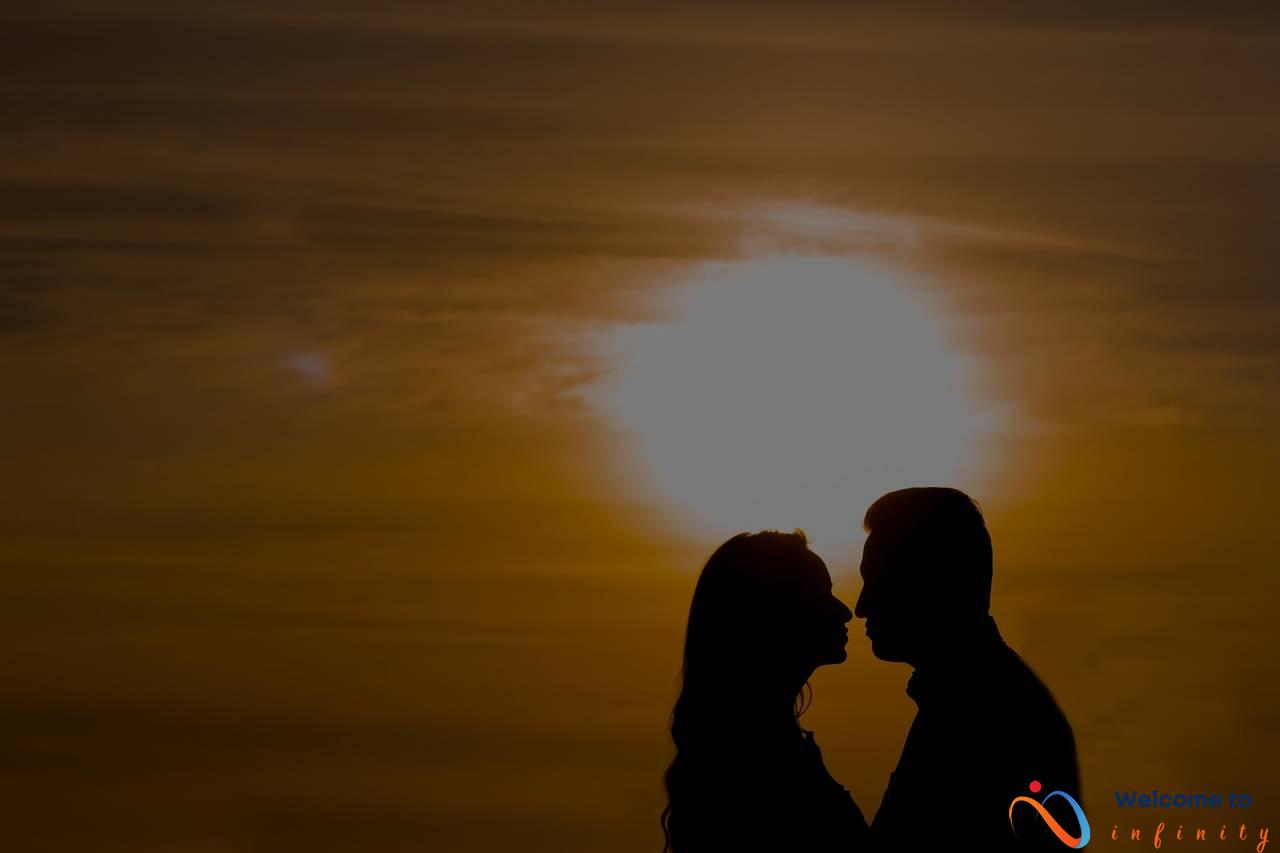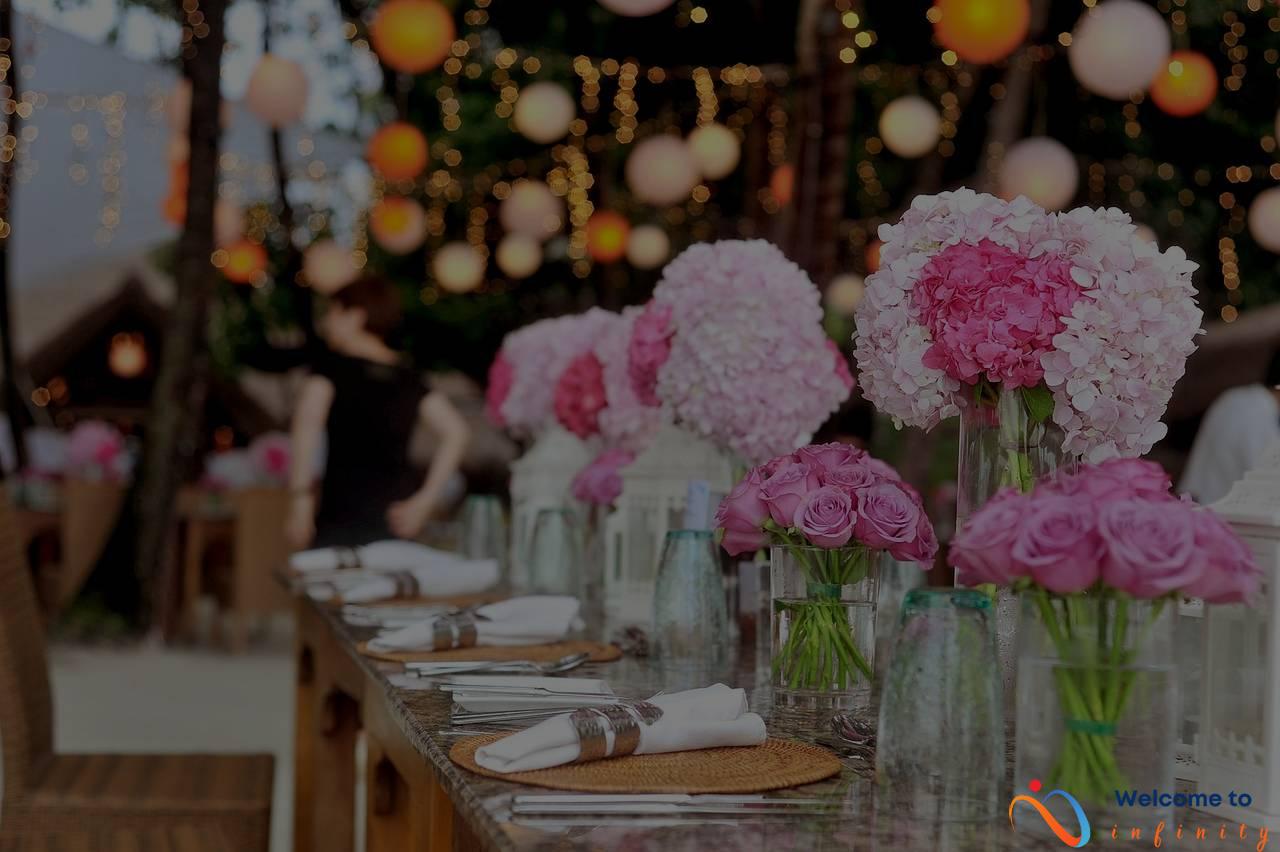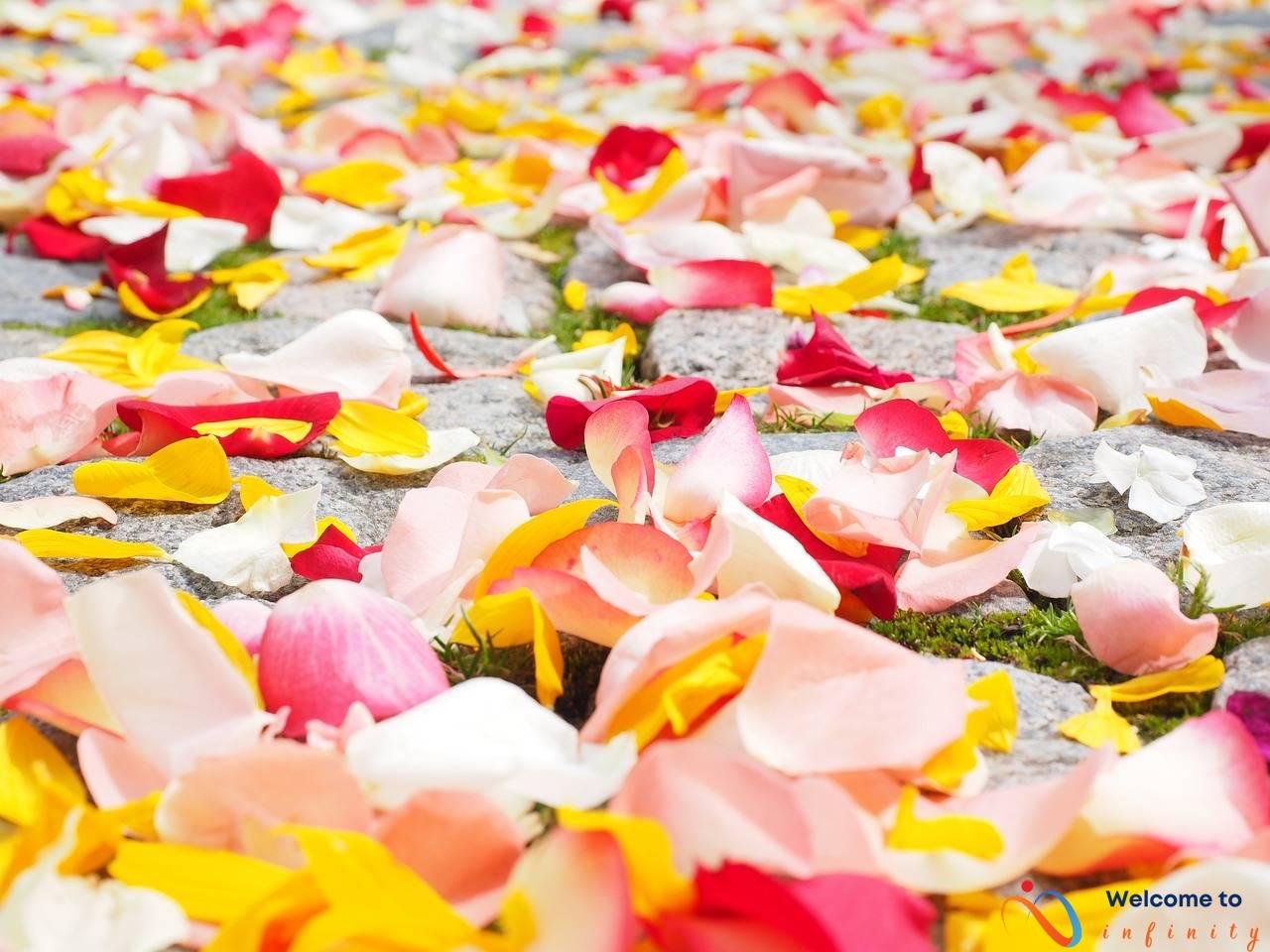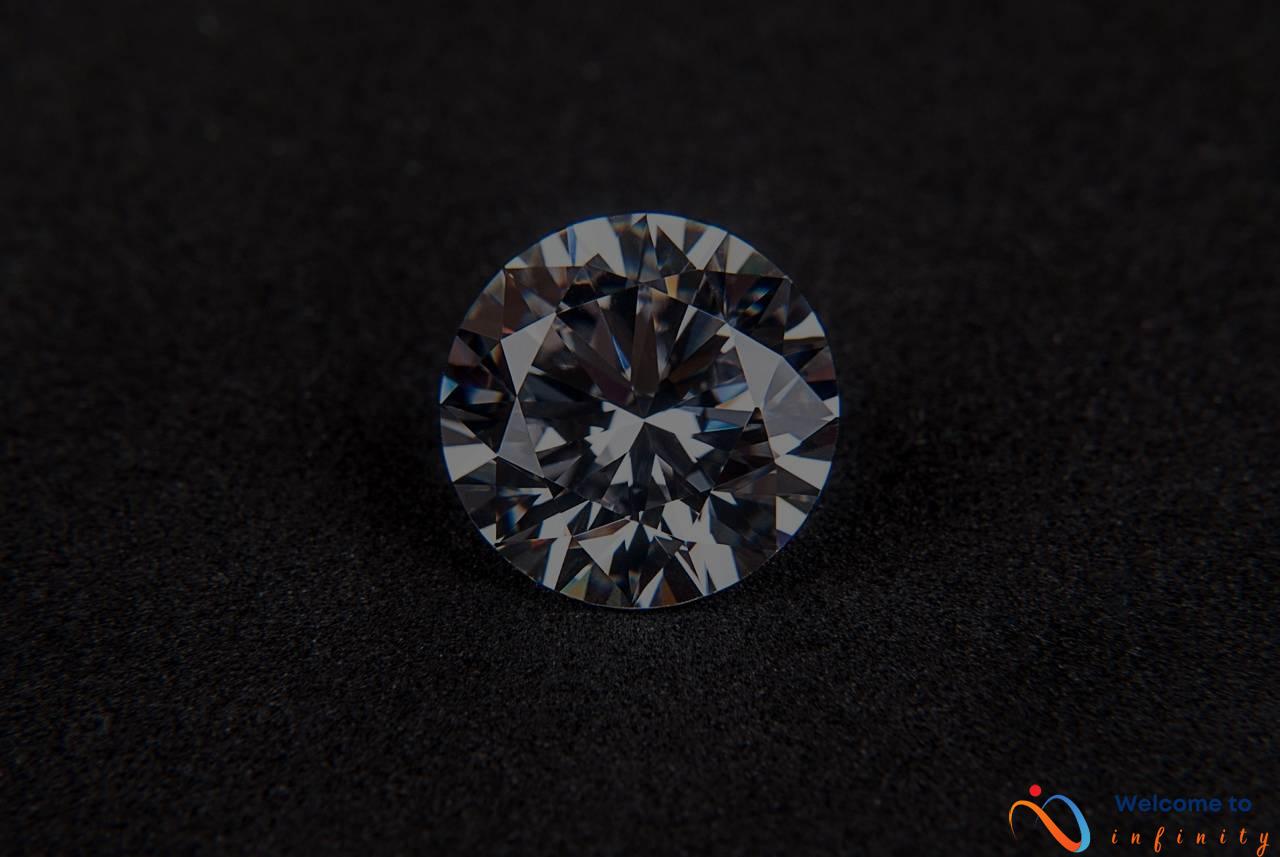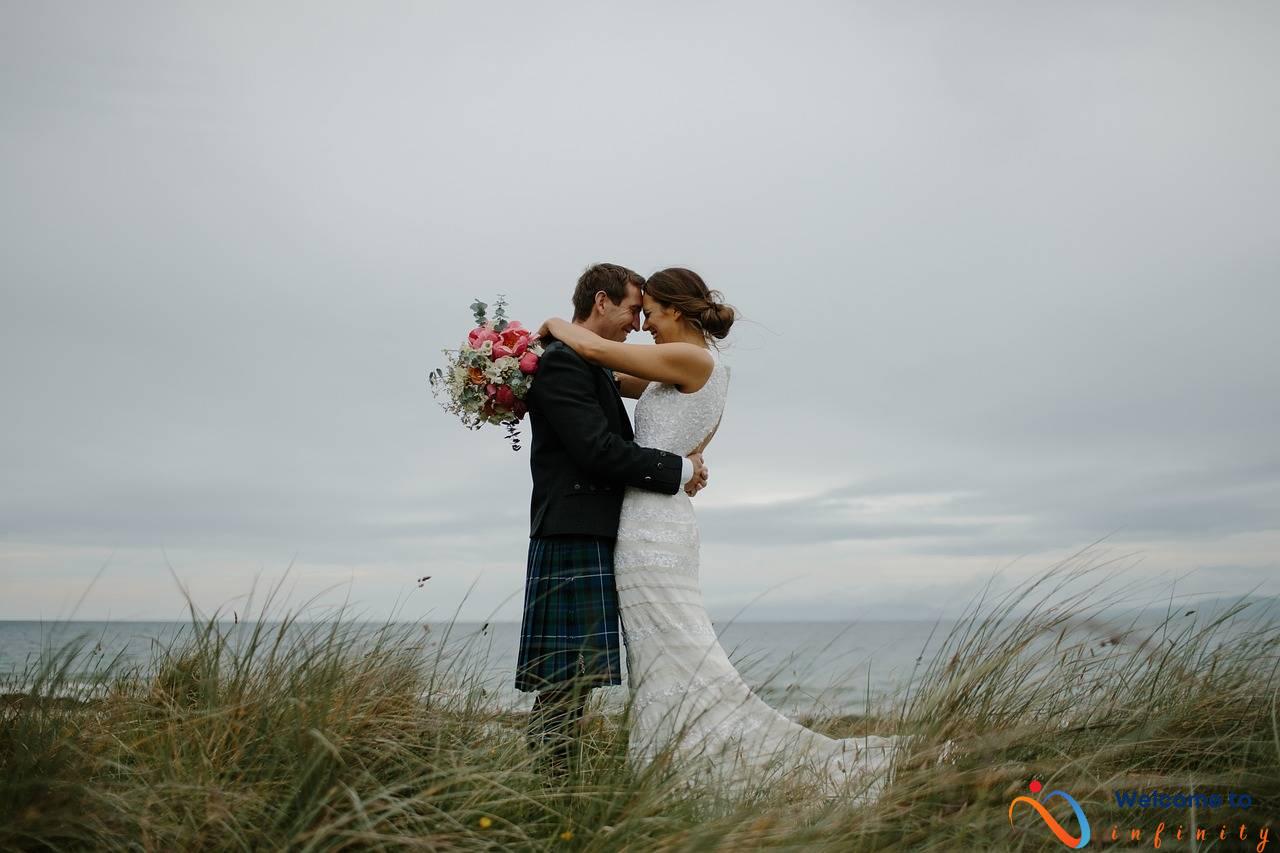If you're planning on creating your own wedding bouquet, congratulations! You're in for a fun and rewarding experience. But before you start picking out flowers, there are a few things you need to consider. First, think about the style and colors you want for your bouquet. Browse magazines or websites for inspiration and to help you choose a bouquet that reflects your personality and complements your wedding theme.
Once you've decided on the style, it's time to gather your materials. You'll need flowers, greenery, floral tape, and ribbon. When choosing flowers, consider the season and availability. It's also important to know which flowers are best for bouquets and how many stems you'll need. For filler flowers, choose ones that complement the main flowers and add texture and volume. And for greenery, consider different types of leaves and ferns to make your bouquet look fuller.
Now that you've gathered your materials, it's time to assemble your bouquet. First, build the shape of the bouquet according to your chosen style. Then, start placing and securing each flower in the bouquet using floral tape or wire. To make sure everything stays in place, wrap the stems with floral tape and finish with ribbon or twine.
Don't forget the finishing touches! Use ribbon or lace to wrap the stems, and consider adding a special charm or brooch to make your bouquet even more unique.
Transporting and storing your bouquet is also important. Place the bouquet in a vase or container with water and store it in a cool, dark place such as a closet or basement. When transporting the bouquet, cover it with a plastic bag to keep it from getting crushed.
Creating your own wedding bouquet can be a fun and memorable experience. With these tips and tricks, you'll be able to create the perfect bouquet that reflects your style and personality.
Decide on the style and colors
Choosing the style and colors of your wedding bouquet can be overwhelming with so many options out there. Start by finding inspiration; look through bridal magazines and online galleries to get a feel for different styles. Don't be afraid to mix and match different elements to create a unique bouquet that reflects your personal style.
Consider the wedding theme and color scheme you have chosen, the season, and the wedding dress design. These elements will help guide you in choosing the perfect bouquet style and corresponding colors. If your wedding has a bohemian or rustic theme, consider a loose and natural bouquet with soft, muted tones. For a more formal or classic wedding, opt for a tightly arranged bouquet with bold and bright colors.
- When choosing colors, think about the overall color scheme of your wedding. Look at the colors of the bridesmaids' dresses, the décor, and the venue.
- Consider using a color wheel to help you find complementary or contrasting colors that will make your bouquet stand out and complement the rest of the wedding design.
Remember to choose flowers that are in season and easily accessible, as this will help keep costs down and ensure the flowers are fresh. Experiment with different flower combinations and textures to create a unique bouquet that reflects your personal style and taste.
Gather the materials
One of the most important steps in creating your own wedding bouquet is gathering the materials you need. You will need to have the right flowers, greenery, floral tape, and ribbon to create a beautiful and long-lasting bouquet. Here are some tips on gathering the materials:
- Flowers: Choose the flowers that suit your wedding theme and personal style. Some popular choices include roses, peonies, lilies, and dahlias. Make sure to buy enough flowers to create the bouquet size you desire and to allow for some extras in case of mistakes.
- Greenery: Greenery adds texture and volume to your bouquet. Select the ones that complement your main flowers. Eucalyptus, ivy, and ferns are great choices.
- Floral tape: This is used to hold your bouquet together and keep the flowers in place. You can find them at any flower supply or craft store.
- Ribbon: The ribbon is used to cover the stems of your bouquet and add a finishing touch. Choose a ribbon that complements your wedding colors and theme.
Remember to prepare everything in advance and double-check that you have all the necessary materials. This prevents any last-minute panics during the wedding planning process. Once you have everything you need, you can proceed to the next steps of creating your own wedding bouquet.
Choose the right flowers
The flowers you choose for your wedding bouquet can create the mood and aesthetic of your entire wedding. You have several options, but before you select your flowers, there are a few things you need to consider. First, decide on the color palette and style you want to achieve. Once you have a clear idea of what you want, it's time to select your flowers.
For a bridal bouquet, choose flowers that are sturdy enough to hold up throughout the day and still look beautiful at the end of the night. You can choose roses, peonies, lilies, dahlias, ranunculus, or a mix of different flowers in various shapes and sizes. Consider the fragrance as well as certain flowers, such as lilies, can be overpowering.
To determine the number of flowers you need to purchase, consider the size of your bouquet, the size of the blooms you select, and the fullness you desire. A general rule of thumb is to have 12-15 stems of flowers for a small bouquet, 20-30 stems for a medium-sized bouquet, and 30-40 stems for a cascading or larger bouquet.
When shopping for flowers, choose blooms that are in season. Seasonal flowers tend to be more affordable, more readily available, and have better quality. Don't be afraid to mix in some greenery or filler flowers for texture and volume. These additions can make your bouquet look more full and organic.
In summary, selecting the right flowers and the right amount is important to create the perfect wedding bouquet. Consider the style, color palette, and season, and don't hesitate to mix in some filler flowers and greenery for added texture and volume.
Greenery and filler flowers
When creating your wedding bouquet, choosing the right filler flowers and greenery is just as important as selecting the main flowers. These elements serve to add texture and volume to the bouquet, making it look fuller and more complete.
When deciding on filler flowers, consider the colors and shapes that will complement the main flowers. Baby's breath and Queen Anne's lace are popular options that provide a delicate, airy look to the bouquet. You can also opt for small roses, daisies, or carnations in a color that matches or complements the main flowers.
For greenery, think about the overall shape of the bouquet and how the chosen greens will enhance it. Eucalyptus, ferns, and ivy are popular choices that add volume and texture while still allowing the main flowers to be the focal point. You can also opt for herbs like lavender or rosemary for a fragrant touch.
When selecting filler flowers and greenery, keep in mind the quantity needed. Generally, you will need about half as much filler and greenery as you do main flowers. Don't be afraid to play around with different combinations and textures until you find the perfect balance for your bouquet.
Once you've selected your filler flowers and greenery, it's time to start arranging! Begin by placing larger greenery stems towards the center of the bouquet and work your way outward. Add filler flowers in between the greenery stems to create a cohesive look. With a little practice and patience, you'll have a beautiful and personalized wedding bouquet that's sure to impress!
Assemble your bouquet
Assembling your bouquet is where the magic happens! First, you'll want to gather all your flowers, greens, floral tape, and wire. Once you have everything organized, begin by forming the structure of the bouquet according to your chosen bouquet style.
For a hand-tied bouquet, start by holding the stems of the flowers in one hand and adding additional flowers around the edge, rotating the bouquet as you go. For a cascading bouquet, start with the flowers at the top and work your way down towards the bottom, staggering each layer.
Once you have the basic shape, begin to place and secure each flower in the bouquet using floral tape or wire. Start with the largest flowers and work your way down to the smaller filler flowers. Be sure to add some greenery in between for added texture and volume.
While assembling, keep in mind how the bouquet will balance and if there are any flowers or greens that need to be adjusted for optimal placement or visibility. Don't be afraid to make adjustments as you go, and be sure to step back and take a look at the overall shape to make sure it's coming together as planned.
As you continue to add flowers and greens, be sure to hold the bouquet up to make sure it's taking shape as intended. You may need to add more filler flowers or greens to create the fullness you're looking for.
Once all the flowers and greens are in place, wrap the stems tightly with floral tape and then ribbon to add the finishing touch. Be sure to tie the ribbon tightly and tuck the ends in to create a clean, seamless look.
And there you have it, a gorgeous DIY wedding bouquet that will be sure to impress your guests and make your big day even more special.
Building the shape
Building the shape of your wedding bouquet is a crucial step in the process of creating the perfect bouquet. The shape determines the overall look and feel of the bouquet, and it's essential to consider the chosen style when forming it. There are several shapes that you can choose from, depending on your preferences, such as round, cascading, crescent, or hand-tied.
If you have chosen a round bouquet, you'll need to create a dome shape, which involves organising the flowers in a circular pattern and making sure that the flowers are proportionally arranged. You can start with a few large blooms and add smaller ones as you go along until you achieve the desired fullness.
On the other hand, if you have decided on a cascading bouquet, you'll need to form the bouquet so that it falls gracefully down your arm. You can achieve this effect by positioning the flowers in a descending pattern, meaning that the largest blooms should be placed at the top and gradually decrease in size.
If you prefer a structured look, then the crescent bouquet may be your choice. It features a crescent shape and is made by arranging flowers in a half-moon shape, with larger blooms positioned in the middle and smaller ones on either side.
Finally, for a simpler, more natural look, you can opt for a hand-tied bouquet, which is perfect for a rustic or bohemian-themed wedding. This bouquet consists of a relaxed arrangement of flowers, tied together with twine or ribbon.
In conclusion, building the shape of your wedding bouquet requires attention to detail and a clear understanding of the chosen style. Whether you prefer a round, cascading, crescent, or hand-tied bouquet, follow the specific steps for each style to ensure that you create a beautiful and unforgettable bouquet for your special day.
Arrange the flowers
Now that you have the perfect selection of flowers and greenery for your wedding bouquet, it's time to arrange them. The arrangement process involves placing and securing each flower in the bouquet with floral tape or wire. Here's a step-by-step guide to help you create the perfect wedding bouquet:
- Start with the focal flowers: Begin with the main flowers and place them at the center of the bouquet. They should be slightly taller than the rest of the flowers and need to create the desired shape of the bouquet.
- Filler flowers and greenery: Add the filler flowers and greenery to the bouquet. These additions will offer volume and texture to the bouquet and also serve as a background for the main flowers. Use floral tape to fix these flowers in your desired position.
- Alternate flower types: Experiment with alternate flower types while arranging the bouquet. This will achieve a balanced mixture of colors and textures.
- Use wire to secure the flowers in place: Once the flowers are in position, it is best to secure them. Use floral wire to tighten the stems together at the base while still maintaining the desired shape.
- Secure the bouquet with tape: Use floral tape to conceal the wire and create a neat and polished finish. Wrap the tape tightly around the stems so that the flowers stay put.
Keep going over the arrangement, making any necessary adjustments until you are happy with the final result. The perfect bouquets can make your wedding truly unique and memorable. By following these step-by-step instructions, you can successfully arrange beautiful bouquets that match your desired style.
Add finishing touches
after arranging your flowers, it is time to add the finishing touches to your DIY wedding bouquet. This includes wrapping the stems with ribbon or twine to give it a polished and cohesive look. First, trim the stems with wire cutters to ensure they are all the same length.
Next, choose a ribbon or twine that complements your bouquet's color scheme and style. Satin or silk ribbon is an excellent choice for a classic and timeless look, while burlap or lace adds a rustic touch to your bouquet.
Start near the base of the bouquet and wrap the ribbon tightly around the stems, overlapping slightly with each turn. If you want to create a neat and seamless look, use floral pins to secure the ribbon to the stem. Alternatively, you can tie a knot or a bow at the base and let the ends of the ribbon hang loose.
If you want to add more detail to your bouquet, consider adding decorative elements such as brooches, pearls, or crystals to the ribbon. For a more natural and organic look, you can incorporate greenery or berries into the stems along with the ribbon wrap.
Once you have finished wrapping the stems, trim any excess ribbon and tuck or glue the end under the last wrap to keep it in place. Your DIY wedding bouquet is now complete, and it is ready to be used on your big day.
Transporting and storing the bouquet
When it comes to transporting and storing your wedding bouquet, it's important to take the necessary precautions to ensure it stays in tip-top shape before the big day. One simple tip is to keep the bouquet in a vase with enough water to keep the stems hydrated. If you're traveling with the bouquet, avoid leaving it in direct sunlight or in a hot car for extended periods.
Another option is to create a makeshift bouquet holder using a bucket or cooler filled with water. Simply place the bouquet in the water and cover it with a plastic bag to keep it from getting wet on the way to the venue. Be sure to keep the arrangement upright and stable to prevent any damage to the flowers or shape of the bouquet.
If you're flying to your wedding destination, it's a good idea to check with the airline to see if they have any specific guidelines for transporting flowers. You may need to properly package the bouquet in a box or container, or even ship it separately to ensure it arrives safely.
Once you arrive at the venue, store the bouquet in a cool, dark place until it's time to walk down the aisle. Avoid exposing it to extreme temperatures or harsh lighting, as this can cause the flowers to wilt or fade. And, if possible, have a backup plan in case of any mishaps with the original bouquet.
By following these tips for transporting and storing your wedding bouquet, you can ensure it looks just as stunning on your wedding day as it did when you first put it together.




